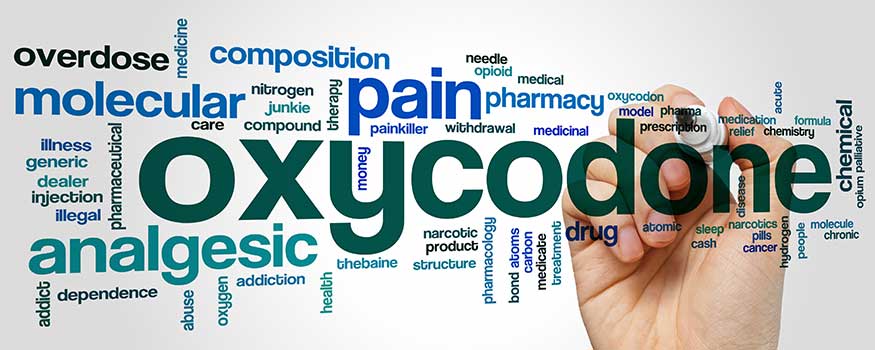What do you know about addiction to opioids? If you are like many clinicians you might have trouble sorting out the facts, which can affect your ability to identify and care for a patient who is addicted to these substances.
For instance, tolerance, physical dependence, and certain patient behaviors, such as repeated requests for pain relief or requesting an opioid before the prescribed interval has elapsed, can be confused with addiction, causing clinicians to think it’s more common than it is. Further, clinicians may erroneously believe addiction constitutes behaviors that the patient can easily choose to do or not do. This belief perpetuates the stigma associated with addictive disease.
Addiction versus tolerance or physical dependence
Tolerance to and physical dependence on opioids (formerly called narcotics) are not the same as addiction. Both tolerance and physical dependence are normal responses that usually occur with regular administration of an opioid, whether for medical use or abuse or addiction. Addiction is not a normal response to regular administration of an opioid. It is a rare consequence, occurring <1% of the time.
Either physical dependence or tolerance—or both—can occur with addictive disease, but they may also occur alone or together in the absence of addictive disease. Tolerance usually occurs within the first few days to two weeks. Physical dependence usually occurs after two weeks or more.
Tolerance to opioids consists of a decrease in one or more effects of an opioid, such as decreased analgesia, sedation, or respiratory depression. If tolerance to analgesia occurs, it requires an increase in dose to achieve the same pain relief from the opioid.
Physical dependence on opioids is manifested by the occurrence of withdrawal symptoms when the opioid is suddenly stopped or rapidly reduced or an antagonist such as naloxone is given. These symptoms can be prevented by a gradual reduction of the opioid (tapering) when pain decreases.
Addiction to opioids is an acquired brain disease that inhibits the patient’s ability to control impulses. It occurs over time and is influenced by genetic, psychosocial, and environmental factors.
Models of addiction
When you care for a patient who is addicted to opioids, can you incorporate the more recent focus on addiction as a brain disease? Your basic education may not have included much about this concept. Even if it did, you may still be confused by what we used to think about addiction. And, the concept of addiction as a brain disease may be especially difficult to apply when the patient has pain that must be treated with an opioid.
For many years society and healthcare providers viewed addiction to opioids from the moral or criminal model. Now the disease model is the validated medical model to be used in clinical practice. Separating and comparing the three models helps clarify the current focus.
Moral model. Based on this model the cause of addiction is a moral weakness or lack of will power. Treatment involves increasing moral strength. One treatment strategy is religious conversion.
Criminal model. Addiction is thought to be the result of a bad or evil character. A common treatment strategy is incarceration.
Disease model. This medical model understands that addiction is an acquired brain disease. Treatment is aimed at normalizing brain disruption. Pharmacotherapy, such as methadone, and cognitive-behavioral therapy are treatment strategies.
The models are summarized below:


The first two models, moral and criminal, are at odds with the evidenced-based disease model, but they are still pervasive in the minds of clinicians and society. The moral and criminal models see addiction as resulting in behaviors that the person can freely choose to do or not to do. Thus, the patient with addictive disease can and should cease these behaviors. When the person does not stop behaving this way, these models blame and shame the person and may understandably result in anger toward the patient. This is a source of great stigma being associated with addictive disease.
The disease model recognizes that addictive disease is a brain disease in which there is damage to the brain’s impulse and decision centers that inhibit the person’s ability to control impulses. This leads to impaired control over drug use, resulting in behaviors that make no sense to the observer, such as continued use of the drug despite harm. Understanding addiction in this way reduces stigma and promotes a focus on addiction as a disease that is caused by brain damage and not by a failure of the patient to voluntarily stop these behaviors.
Changing attitudes toward patients with addictive disease
How do we change our attitudes that are based on the moral or criminal models? Like many long-held beliefs, this requires repeated education about the disease model. And, you need to discuss what you have believed and been taught about addiction and how this compares with the disease model.
When asked, most nurses say that they do not want punitive attitudes to interfere with the quality of their care. They believe that they could benefit from discussions about patients addicted to opioids. To prevent these negative feelings from affecting care, they often feel that it helps to begin by admitting that they do not like a certain patient. This opens the door to explaining that such a patient has a brain disease that inhibits control over behaviors that hurt themselves and others. This helps decrease punitive feelings toward the patient and allows clinicians to focus on providing care that addresses the disease, such as considering pharmacotherapy.
Misconceptions about identifying addictive disease
Some clinicians seem to believe that addiction is easily identified by the presence of certain behaviors. However, a diagnosis of addictive disease requires observation of a patient’s behavior over time, and no single behavior justifies calling the patient addicted. The term addictive disease should be used carefully and only after an appropriate evaluation by a qualified clinician, such as an addiction specialist. Unfortunately, in reality, such a clinician often is not available.
Consequently behaviors indicative of opioid misuse or abuse may be interpreted as addiction. The estimated rate of addiction to alcohol and other drugs in the general population ranges from 6% to 10%. Although the percentage of opioid abuse is not known, it is far more common than addiction and often difficult to distinguish from addictive disease. To further complicate the diagnosis of addiction, behaviors that are typical of abuse also occur in addiction. Following are behaviors that could indicate addiction, but also could indicate abuse, undertreatment of pain, or other conditions.
The following are only a few examples of behaviors often cited by clinicians as indicative of addiction. (Note: the following selected misconceptions are paraphrased from the reference McCaffery, Herr, Pasero, 2011) Certainly they could indicate addictive disease, but they might also be caused by something else. An important question to ask is, “”Is there any other way to explain the behavior that seems to indicate addiction?”
Possible misconceptions
As you read each misconception below, you might ask yourself this question before you read the Possible explanation.
Misconception: The patient requests a specific opioid by name and sometimes by route of administration and interval between doses.
Possible explanation: This is likely to be a well-educated patient who probably has had pain, often chronic pain, and knows what works best for him or her. If a patient has asthma and tells you about medications and doses that help, this is welcome information. Information about analgesics should also be welcomed because it helps formulate the pain treatment plan.
Misconception: Patient obtains opioids from more than one prescriber or more than one emergency department (“frequent flyer”).
Possible explanation: This may reflect poor pain management. Perhaps no one prescriber or emergency department has developed an effective pain management plan. For example, neuropathic pain is often overlooked and appropriate adjuvant analgesics, such as gabapentin, have not been tried.
Misconception: Patient “enjoys” his opioid.
Possible explanation: Once pain is relieved the patient naturally returns to a normal or happier mood and engages in more activities such as talking, ambulating, and even going out for a cigarette. The latter seems to disturb nurses, but if the patient is addicted to nicotine the craving can be very strong. Further, cessation of nicotine can result in withdrawal symptoms such as depression, irritability, anxiety, frustration, anger, or restlessness. Obviously the patient would want to relieve these uncomfortable feelings.
Misconception: Patient tells inconsistent stories about pain or medical history.
Possible explanation: Inconsistent recall can be caused by many factors such as a psychiatric condition, cognitive impairment, or adverse effects of medication. Present pain intensity also affects a patient’s recall of chronic pain. When present pain is at a low intensity, pain is recalled as less severe and medication use is recalled as less frequent. Therefore, clinicians should not be surprised when patients tell inconsistent stories about their pain.
Reducing the stigma
To reduce some of the stigma and misconceptions associated with addictive disease, recognize that it is not the same as physical dependence or tolerance. Unlike addiction, these conditions occur frequently after a few weeks of opioid administration, but addiction occurs <1% of the time.
In addition, stigma associated with addictive disease is often a result of lack of education about addiction being an acquired brain disease. Damage to the brain reduces the patient’s control over impulses. The moral model considers addiction a moral weakness. The criminal model believes addiction is the result of a bad or evil character. The moral and criminal models blame, shame, and punish the patient. The disease model is now viewed as the evidence-based medical model, and it focuses on treating the disease.
Another misconception about addiction is that a single behavior is indicative of addiction. However, a single behavior may mean many other things besides addiction. Observation of many behaviors over time is required to establish a diagnosis of addiction.
Margo McCaffery, MS, RN-BC, FAAN, is self-employed as a consultant in the care of patients with pain, Los Angeles, California.
References
Alford DP, Compton P, Samet JH. Acute pain management for patients receiving maintenance methadone or buprenorphine therapy. Ann Intern Med. 2006;144:127-134.
Arnstein P. Is my patient drug-seeking or in need of pain relief? Nursing 2010;40(5)60-61.
McCaffery M, Grimm, M A, Pasero, C, Ferrell B, Uman GC. On the meaning of “drug seeking.” Pain Manage Nurs 2005;6(4), 122-136.
McCaffery M, Herr K, Pasero C. Assessment: basic problems, misconceptions, and practical tools. In Pasero C, McCaffery M. Pain assessment and pharmacologic management, pp. 15-176. Elsevier, St. Louis, 2011.
Webster L, Dove B. Avoiding opioid abuse while managing pain. North Branch, MN: Sunrise River Press, 2007.



















3 Comments.
Thanks for shating this it’s really helpful.
I appreciate any education to nurses about addiction. I am a nurse in recovery and worked in an area where the nurses made my addiction a moral issue. I have been clean for 2 years and work a 12 step program. I worked with patients who had dual diagnosis and could totally understand them and they I. My co-workers did not see this as an assett and thought it was shaming. I got laid off and not rehired because I am in recovery and they dont “feel comfortable “with that. Utilize your nurses in reco
Thank You for the article.
It will probably help many patients pain management beeing taken care of !